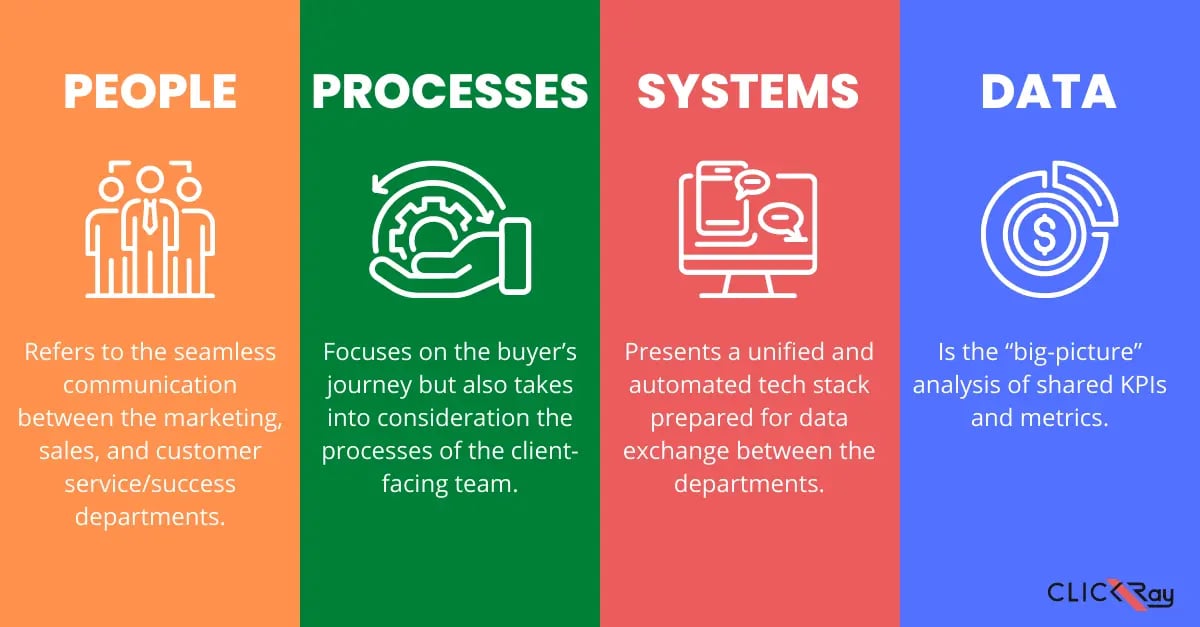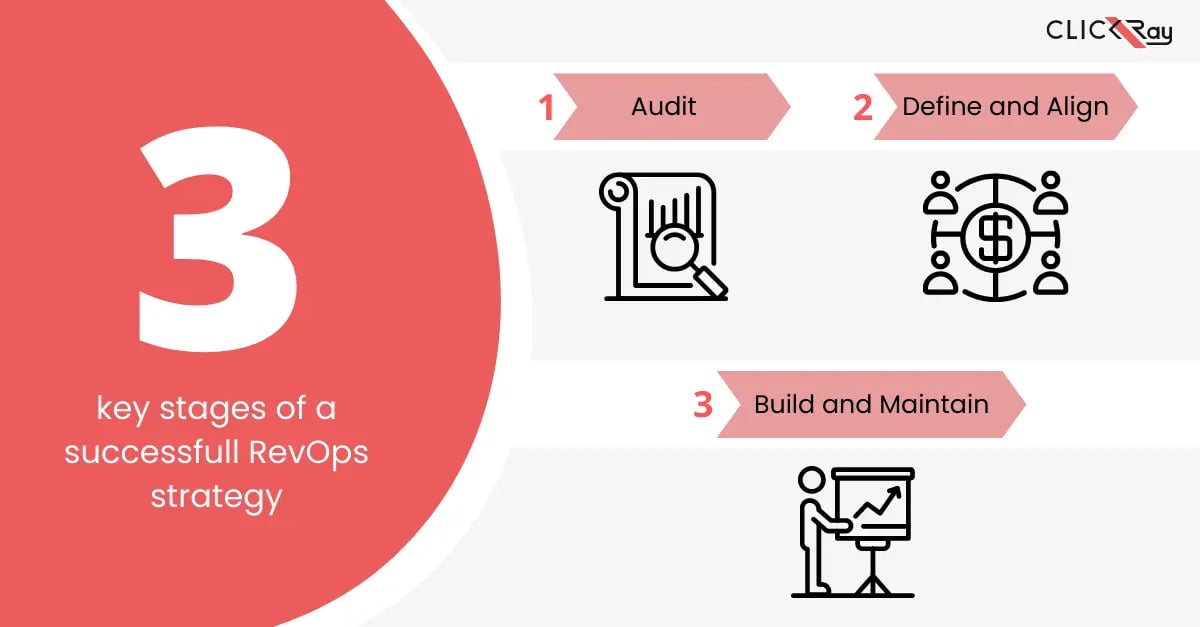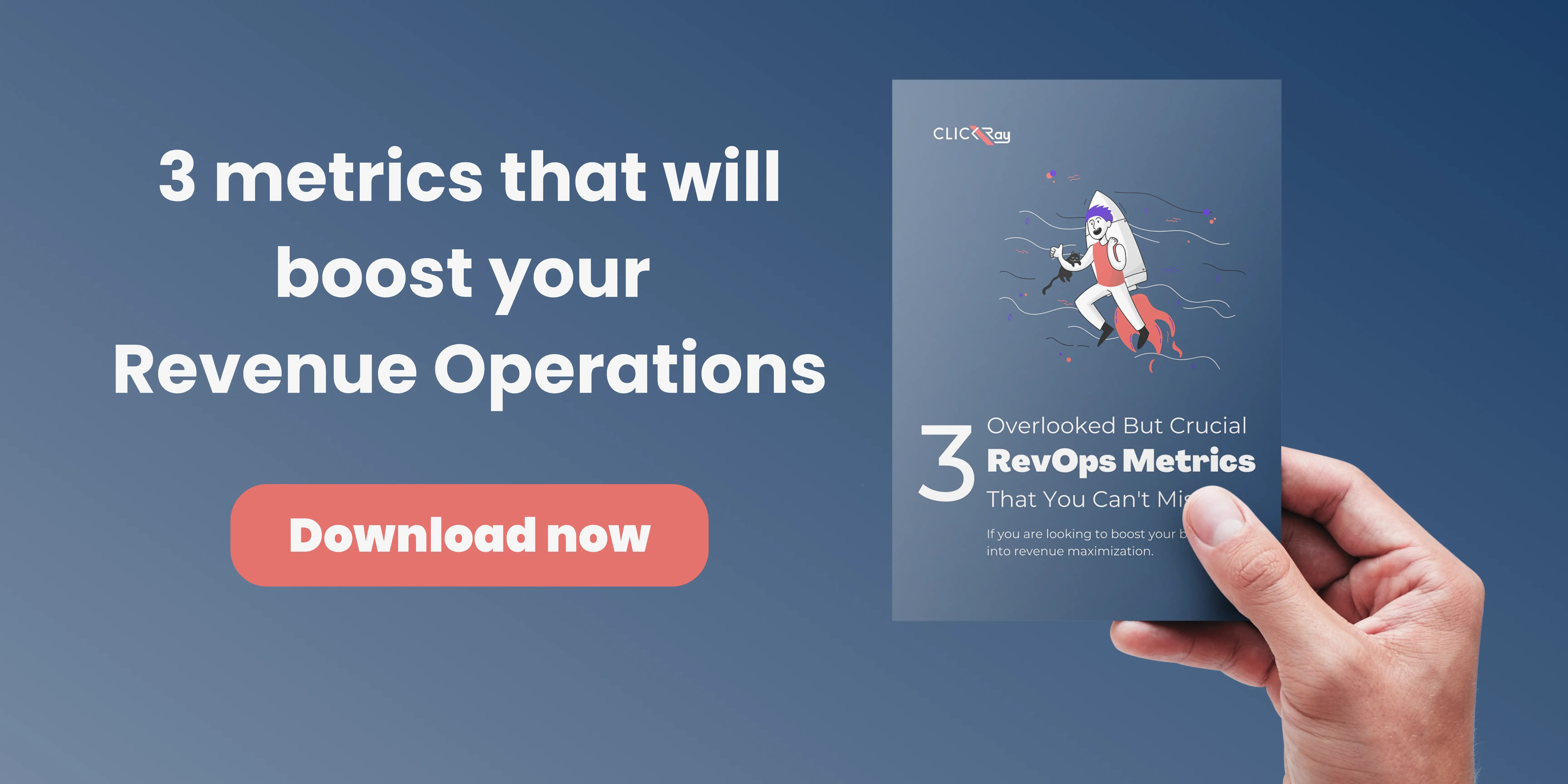Revenue Operations (RevOps for short) is a method for scaling your business, which improves communication between marketing, sales, and customer service/success departments based on smooth data flow, in-depth analysis, and modern technology focusing on automation. And the goal of RevOps is to maximize your business’ revenue growth.
A successful RevOps strategy is based on four key pillars, according to Mary Barba, an Inbound Marketing Professor at HubSpot:
The 4 Pillars of RevOps:
|
Combined together, these four pillars define how a company generates revenue. In this post, I will get into greater detail on how to start working with the RevOps model based on a unification of these four pillars. Let’s get started.
First, let’s define these four pillars to better understand how they work in RevOps.
| PEOPLE | Refers to the seamless communication between the marketing, sales, and customer service/success departments. |
| PROCESSES | Focuses on the buyer’s journey but also takes into consideration the processes of the client-facing team. |
| SYSTEMS | Presents a unified and automated tech stack prepared for data exchange between the departments. |
| DATA | Is the “big-picture” analysis of shared KPIs and metrics. |

And how do these pillars connect together to make a successful RevOps strategy?
Well, we can divide them into 3 key stages:
1. Audit your current business model
First things first, perform an audit of your current business based on the four above-mentioned RevOps pillars. Taking an audit as a starting point will help you better understand what works and what doesn’t; what are the strengths and limitations; what areas need to be improved and what needs to be sacked.
These are some questions you should ask during an audit:
- How well are my website interface and content aligned with my actual buyer’s journey?
- What are the lead (or client) transfer points between my teams?
- Do I have a unified tech stack that is prepared for automating tasks?
2. Define and align your processes
Defining and aligning your processes together will help you achieve the, by providing the teams with accountability that you can check. Defining, in other words, is the process of conclusively deciding on the structure of processes - setting how will they look like. And aligning here means connecting the processes together in certain areas.
Here’s a sample of things to define and align:
- The buyer’s journey and at what point of the buyer’s journey should my teams overlap?
- The sales playbook, in other words, process and methodology, which connect to marketing and customer service.
- Metrics across departments for big-picture analysis.
Creating a streamlined process for your team will also create a seamless user experience for your website visitors and customers, as it helps in increasing efficiency by eliminating bottlenecks to achieve growth. By defining and aligning processes, we assure that our teams have common goals, a clear flow of information, and provide the best possible customer experience.
3. Build and maintain your strategy
What do we mean by building our strategy? Well, it’s setting up the tech stack in part but also setting up the processes defined before.
Here’s what to tackle in this step:
- Build internal and external workflows to automate processes.
- Create a sales playbook for pitching your products/services.
- Set up dashboards for analysis.
Yet building and setting up is not enough in RevOps - the key is to maintain the processes in order to achieve continuous growth of revenue. How can you maintain RevOps? By designating a team or the head, depending on the size of your organization, to lead the strategy - that would be a CRO (Chief Revenue Officer). CRO is responsible for connecting different revenue-related functions, from marketing through sales to customer service/success.

These above-mentioned three key points are just to get you started thinking about the future of your company. Need help?
This blog post is part of ClickRay's RevOps series. Do you want to gain insight into how to successfully implement a RevOps strategy that drives meaningful results of revenue growth? Read more of our articles:
|
What is RevOps? Meaning, structure, and benefits
|





